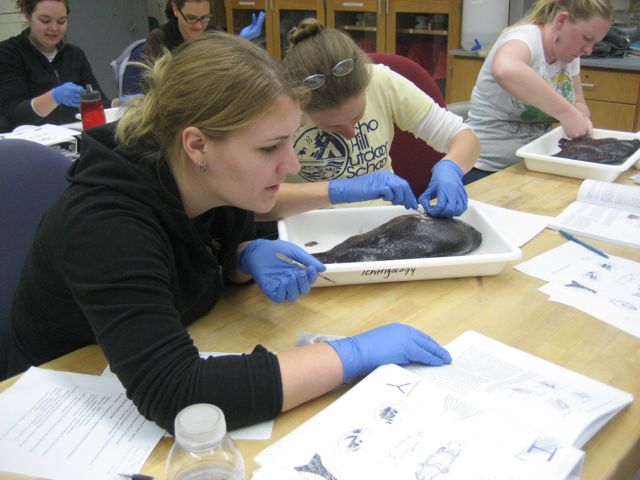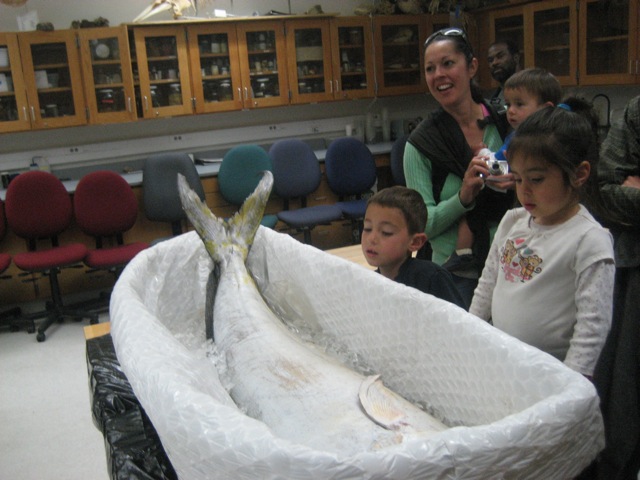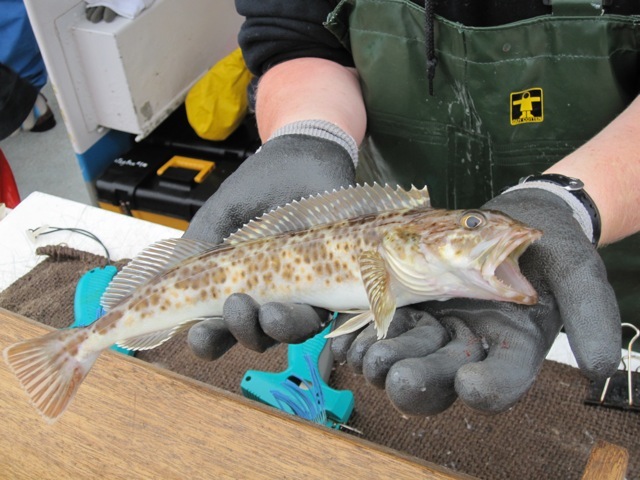
Hook-and-line monitoring surveys of central California’s new Marine Protected Areas yield catches mostly of different species of rockfishes, but every once in a while we reel in a surprise. Ichthyology student Katie Schmidt shows off a King Salmon (the only one of the whole survey!) caught at Año Nuevo in 2009 during a survey by the California Collaborative Fisheries Research Program. We released the fish, despite the hungry looks of Captain Tom Mattusch, who is possibly envisioning some fillets served with a lemon wedge…














